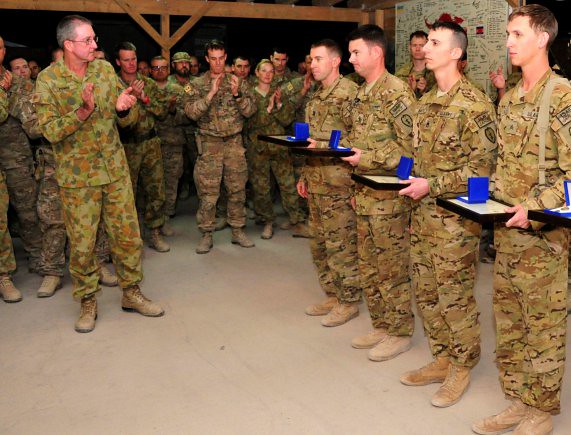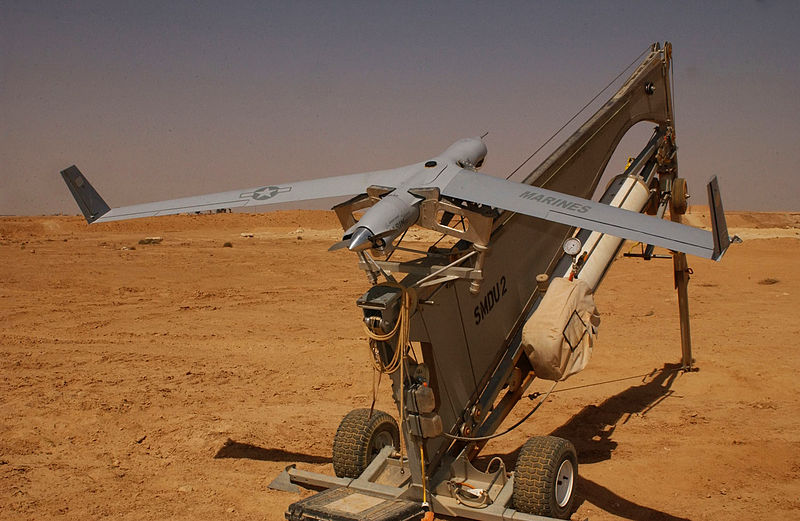 |
| CGI of completed HMAS Canberra |
The hull of the first new amphibious ship has arrived in Australia for outfitting and is expected to set sail with troops on board next year.
Large scale amphibious operations are a step closer after the arrival of the first Landing Helicopter Dock (LHD) hull in Melbourne’s Port Phillip Bay on 17 October 2012.
The ship, which will be commissioned HMAS Canberra, completed a nine-week journey from Australia on the back of a heavy-lift ship.
The Head of Modernisation and Strategic Planning, Major General Jeffery Sengelman, said Army would be heavily involved with the new ships. This will include a sizeable contribution to the crew and also the dedication of 2nd Battalion, The Royal Australian Regiment (2 RAR) to develop and maintain amphibious tactics, techniques and procedures to allow effective projection of land forces from the sea.
“As the capability matures, our troops will be capable of conducting a range of amphibious operations, in particular short-notice humanitarian or noncombatant evacuation operations,” Major General Sengelman said.
“Army will also contribute other combat, combat support and combat service support capabilities as we participate in trials throughout next year.”
He said Army would post 62 personnel to the ship to work with 292 sailors and three Air Force personnel. Lieutenant Colonel Richard Mogg will be the first amphibious operations officer and the senior Army officer posted to the ship.
 |
Canberra’s Hull on slipway after construction
|
“Army personnel will be fully integrated with a number of the ships departments,” Lieutenant Colonel Mogg said.
“Troops will perform key roles in the executive, amphibious, aviation and the logistics departments.”
He said Army specialists and technical support staff would work alongside their Navy colleagues within sub-departments such as supply, explosive ordnance, personnel, administration, technical marine, mechanised vehicle and catering sections.
“Once we have concentrated in Sydney, our work will truly begin. We will undertake a range of individual and collective training activities, including contractor delivered training, in order to prepare us for acceptance trials next year,” Lieutenant Colonel Mogg said.
“The first crew will have a range of challenges to deal with but for Army personnel, we will need to rapidly adapt to the new ship. After finding our sea legs, we are looking forward to the opportunity to work alongside our Navy and Air Force colleagues.
“This project will also deliver new ship-to-shore connectors and other support systems required by these platforms.”
The Navy was also getting ready to support the new ships with a facility at HMAS Albatross to train Navy and Army aviation personnel, while 2 RAR prepared to form the core of the new Amphibious Ready Group, Major General Sengelman said.
“Defence will also continue to work closely with the US and UK colleagues who have been helping us develop our capability,” Major General Sengelman said.
 |
| Spain's Juan Carlos I on which Canberra is based |
“In doing so, we will ensure that we optimise our joint force preparedness to respond to a range of contingencies.”
The hull will be taken to the Williamstown dockyard to connect the ship’s superstructure and install the combat, communications and navigation systems before harbour and sea trials.
The second ship, to be commissioned HMAS Adelaide, is expected in 2014.
Facts about the LHD
• Length: 230.82m
• Four main decks: Well Dock, Heavy Vehicle Deck, Main Accommodation Deck, (including primary casualty facility), Hangar (990m2) and Light Vehicle Deck (1880m2) and a Flight Deck.
• Maximum speed: 20kn with a range of 6000nm.
• Sustained maximum speed: 19kn (full load).
• Ramp access: A stern ramp to well dock for landing craft and vehicles, a fixed ramp between well dock and the 1410m2 heavy vehicle/cargo deck, two lateral starboard ramp doors for wharf access to the heavy vehicle/cargo deck for vehicles up to 65T, vehicle access between the heavy and light vehicle decks on port-side fixed ramp.
• Well dock: 69.3m long and 16.8m wide (1165m2) with room for four LCM1E and four RHIBs. Can handle LCUs, amphibious vehicles, LCACs and other allied nations’ water craft.
• Accommodation deck: Sleeps 1400 personnel, mess decks, medical spaces, galley facilities, office spaces, and recreation rooms. Accommodation room is for 400 ship’s company including the watercraft and flight deck crews and 1000 embarked force personnel including the PCRF, embarked flight, HQ staff and landing force.
• Crew: Navy, Army and Air Force personnel.
• Flight deck: 202.3m long, 32m wide (4750m2) and at a height of 27.50m. It can have MRH-90s, Chinooks, Black Hawks, S-70B-2 Seahawks, Armed Reconnaissance Helicopters and Romeo aircraft on simultaneous takeoff and landing or simultaneous takeoff and landing of four Chinooks.
• Aircraft storage: Hangar has room for eight medium-sized helicopters. Light vehicle deck has room for an additional 10; otherwise 110 vehicles can be loaded across the two vehicle decks.
• Aircraft elevators: One medium-helicopter lift and one large-helicopter elevator.
• Cargo lift: Can transfer 20-foot ISO containers and vehicles up to 16T. Additional lifts for ammunition, provisions and casualties.
• Defence systems: Anti-Torpedo Towed Defence System (Nixie), four 20mm automated guns, 6 x 12.7mm machine guns and an active missile decoy system – Nulka.
• Power: Gas turbine (LM 2500) turbo generator of 19,160kW, two MAN 16V32/40 diesel generators of 7448kW each, two Siemens azimuth POD units of 11.0MW each with two 4.5m propellers, two bow thrusters of 1500kW each and one Progener-Mitsubishi S16MPTA emergency diesel generator of 1350kW.
























_Barrasford_-_geograph.org.uk_-_1587659.jpg)